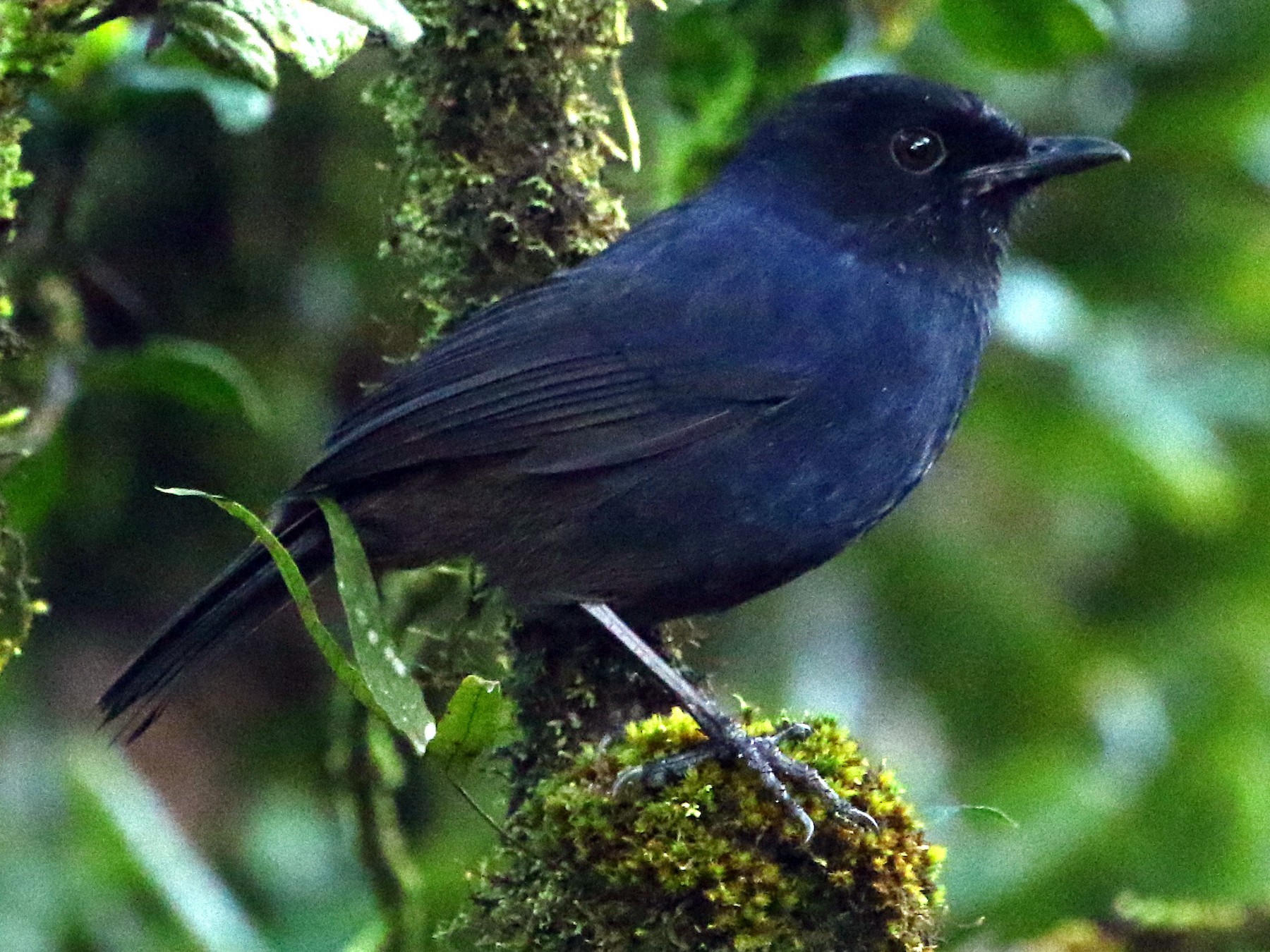Sri Lanka Whistling‑Thrush (Myophonus blighi) – By Malsha – eLanka
Image Source : ebird
Introduction
The Sri Lanka Whistling‑Thrush is an endemic passerine bird found exclusively in the highland rainforests of Sri Lanka. Renowned for its vibrant plumage and melodious calls, this species is a flagship for the island’s montane biodiversity and a key attraction for birdwatchers and nature enthusiasts.
Taxonomy and Nomenclature
-
Scientific name: Myophonus blighi (Holdsworth, 1872)
-
Family: Muscicapidae (Old World flycatchers and chats)
-
Common names: Sri Lanka Whistling‑Thrush, Ceylon Whistling‑Thrush
Description
-
Size: Approximately 20 cm in length.
-
Male plumage: Deep indigo-blue overall, with a darker head and back; bright electric-blue shoulder patches, supercilium (eyebrow stripe), and forehead.
-
Female plumage: Warm brown above and chestnut-buff below, but retains the distinctive blue shoulder patch.
-
Bill & legs: Stout, black bill; strong dark legs suited for terrestrial foraging.
Distribution & Habitat
-
Range: Restricted to montane forests above 1,000 m elevation in central Sri Lanka—primarily Horton Plains, Peak Wilderness, and the Knuckles Range.
-
Habitat: Prefers dense, wet forests near streams and waterfalls; often forages along rocky streambeds under thick canopy.
Behavior & Ecology
-
Foraging: Omnivorous diet—feeds on insects (beetles, ants), earthworms, small frogs, and berries. It forages by hopping on rocks and fallen logs, flicking leaves aside in search of prey.
-
Social structure: Solitary or in loose pairs; does not form large flocks. Most active at dawn and dusk (crepuscular), when it often calls and feeds.
Breeding
-
Season: Breeding typically begins in February, coinciding with the dry season in the highlands.
-
Nest: Neat cup-shaped structure of moss, twigs, and leaves, built on a low branch or rock ledge over or near water.
-
Clutch size: Usually 1–2 pale greenish or bluish eggs.
-
Parental care: Both sexes share nest-building and feeding duties.
Vocalizations
The species is named for its clear, whistled song—a series of simple, melodious notes delivered from a hidden perch. Males sing to establish territory and attract mates; the call can carry through the dense forest at dawn.
Conservation Status
-
IUCN Red List: Endangered.
-
Threats: Habitat loss due to deforestation, conversion of montane forests to agriculture, and disturbance from tourism. Climate change poses an additional long‑term risk by altering highland forest microclimates.
-
Conservation actions: Protected areas such as Horton Plains National Park and the Peak Wilderness Sanctuary safeguard key populations. Continued habitat protection, restoration of degraded forest patches, and regulation of ecotourism are vital.
Observation Tips
-
Best locations: Horton Plains NP (around Baker’s Falls and World’s End lookout) and streams near Haggala Botanical Gardens (Nuwara Eliya).
-
Timing: Early morning (5:30–8:00 AM) and late afternoon; listen for its distinctive whistle.
-
Field gear: Wear muted clothing and use a spotting scope to observe birds on rocky streambeds without causing disturbance.
The Sri Lanka Whistling‑Thrush stands as a symbol of the island’s unique montane biodiversity. Preserving its habitat not only safeguards this charismatic species but also the myriad other organisms that share Sri Lanka’s highland ecosystems.





















